Nature Garden Ideas: Transform Your Backyard into a Green Oasis
Creating a nature garden can transform your outdoor space into a vibrant oasis. Why should you consider a nature garden? It fosters biodiversity, attracts wildlife, and creates a peaceful environment for you to enjoy. Whether you have a small backyard or a large plot of land, there are endless possibilities for turning your garden into a natural haven.

You’ll find that a nature garden not only enhances the beauty of your space but also supports local ecosystems. By incorporating elements like native plants, water features, and habitat structures, you’ll be taking steps towards creating a more sustainable and eco-friendly garden.
1) Butterfly Water Fountain

A butterfly water fountain can be a beautiful addition to your garden. It combines the soothing sound of flowing water with a vibrant display of butterflies.
Place the fountain in a sunny spot to attract butterflies. Adding flowers like aster and lavender nearby will make it even more inviting for these lovely insects.
Consider a small outdoor fountain with a tiered design. The flowing water will provide both a water source and a pretty attraction in your garden. Adding rocks or a bird bath can help, too.
2) Winding Stone Pathway
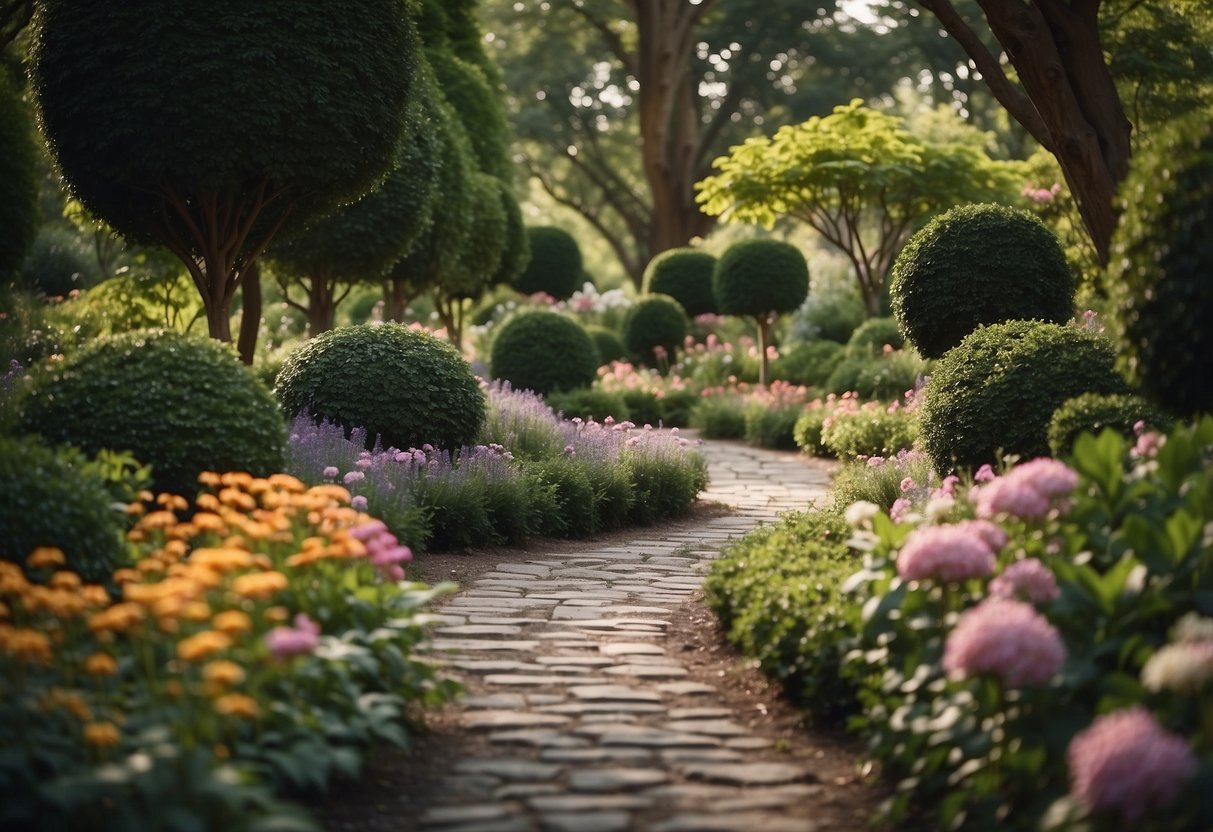
A winding stone pathway can add charm and functionality to your garden. This design guides visitors gently through your outdoor space, making the journey as enjoyable as the destination.
Using varied shapes and sizes of stones creates a natural feel. You can find inspiration for this in several garden path ideas discussed here.
To make the path blend with your garden, consider planting flowers or shrubs along the edges. This can enhance the beauty and serenity of your outdoor area.
3) Herb Spiral Garden

An herb spiral garden can be a fun and creative way to grow many types of herbs. It’s a small, vertical garden that takes up less space while adding a stylish feature to your yard.
Start by gathering stones or bricks to build the spiral wall. The wall should spiral upwards to create different levels.
These levels provide diverse growing conditions for various herbs. For example, plant herbs that love dry conditions at the top and those needing more moisture at the bottom. This design helps maximize space and add visual appeal to your garden. For more information, visit this guide on building a spiral herb garden.
4) Bird Attracting Flower Beds
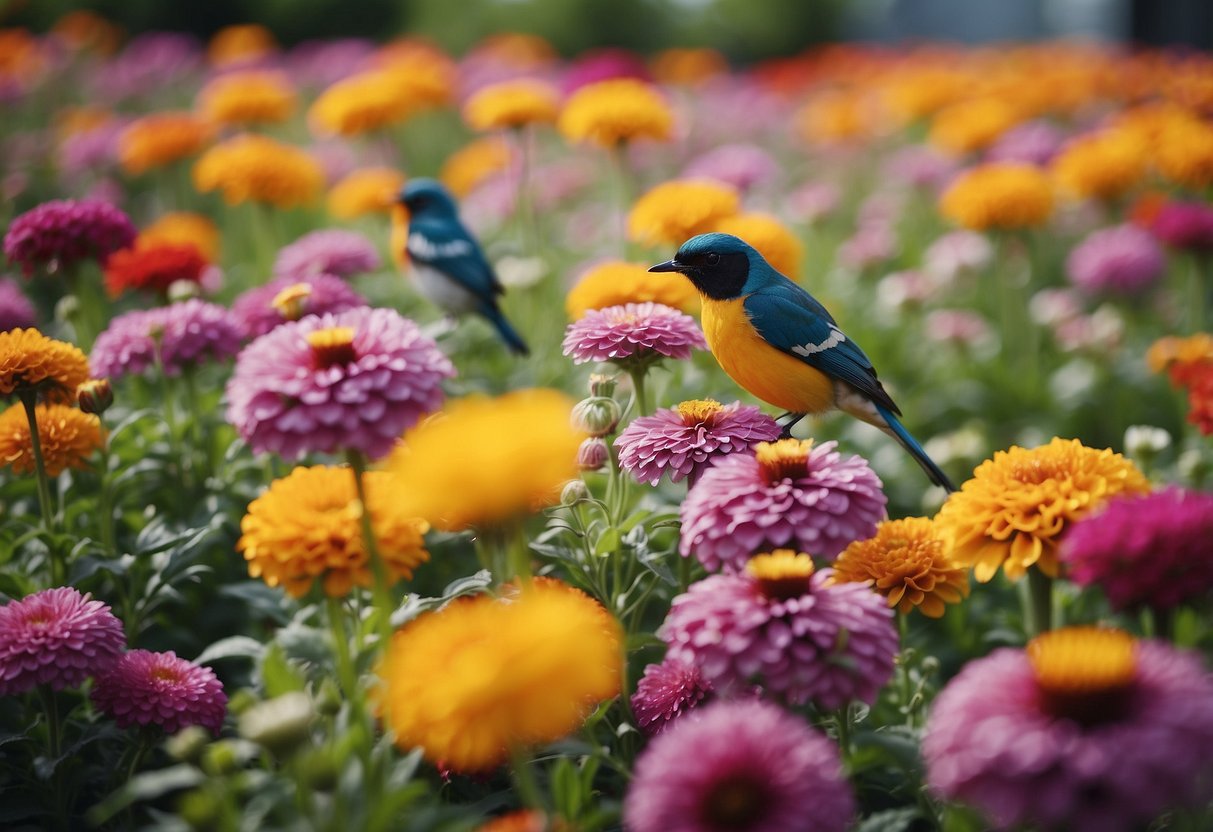
To attract birds, plant flowers that provide nectar and seeds. Flowers like catmint and bee balm are great choices. They not only bring color to your garden but also help in attracting birds and butterflies.
Consider adding larger shrubs like serviceberry. These provide additional food for the birds.
Don’t forget to leave some space between plants to avoid overcrowding.
5) Vertical Vegetables Garden

Growing vegetables vertically can save space and look fantastic. You use walls, fences, or specially designed frames to make the most of outdoor or even indoor areas.
Try creating a simple structure with wooden pallets. Fill each slot with soil and plant your favorite veggies like lettuce or spinach in them.
You can also use wooden crates painted in different colors to create a unique, colorful vertical garden. Add more layers to maximize the space for growing herbs and small vegetables.
A drip watering system can make it even easier by providing consistent moisture to your plants.
6) Rustic Wooden Benches

Rustic wooden benches add charm to any garden. They blend naturally with the surroundings and provide a cozy spot to relax.
You can use reclaimed wood for a bench that has character and history. Pair it with some outdoor cushions for added comfort.
A simple log bench is easy to make and looks great among plants and flowers. You can find more ideas here.
7) Natural Pond with Lily Pads
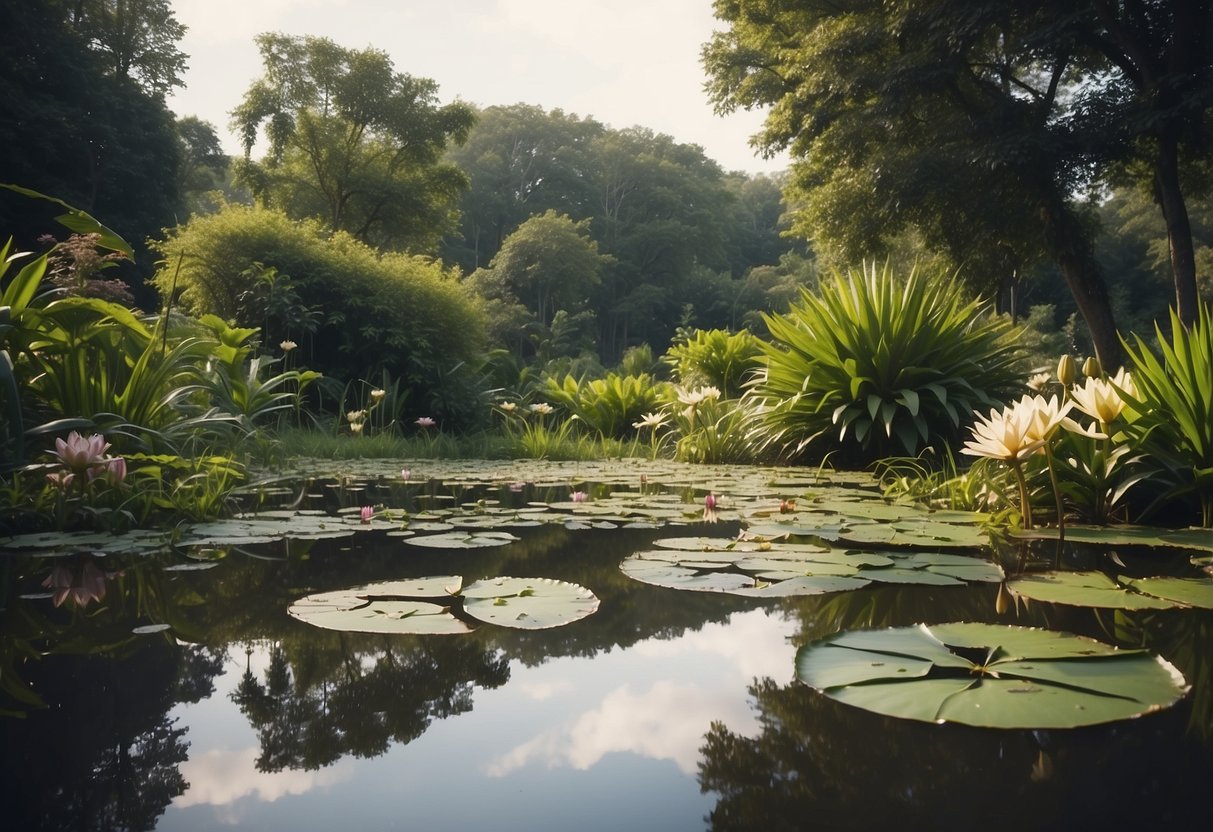
Creating a natural pond with lily pads can transform your garden into a peaceful oasis. Lily pads not only look beautiful but also offer shade, which helps keep the water cool.
To start, choose a variety of water lilies that fit your pond size. Dwarf varieties are ideal for smaller ponds.
Plant the lily pads in containers with good quality aquatic soil. Position the rhizome correctly, ensuring the growing tip faces upward, and leave the top exposed. This helps the lily pad establish itself.
Using lily pads encourages wildlife, attracting frogs and dragonflies to your garden. Your pond will be teeming with life in no time!
8) Edible Flower Planters

Edible flower planters are a fantastic way to add beauty and function to your garden. Flowers like violas, nasturtiums, and marigolds are easy to grow and have vibrant colors.
These flowers can be used in salads, teas, and desserts. They thrive in containers, making them perfect for patios or balconies. Basil, chives, lavender, and thyme blossoms are also wonderful choices for planters.
9) Fairy Light Canopy
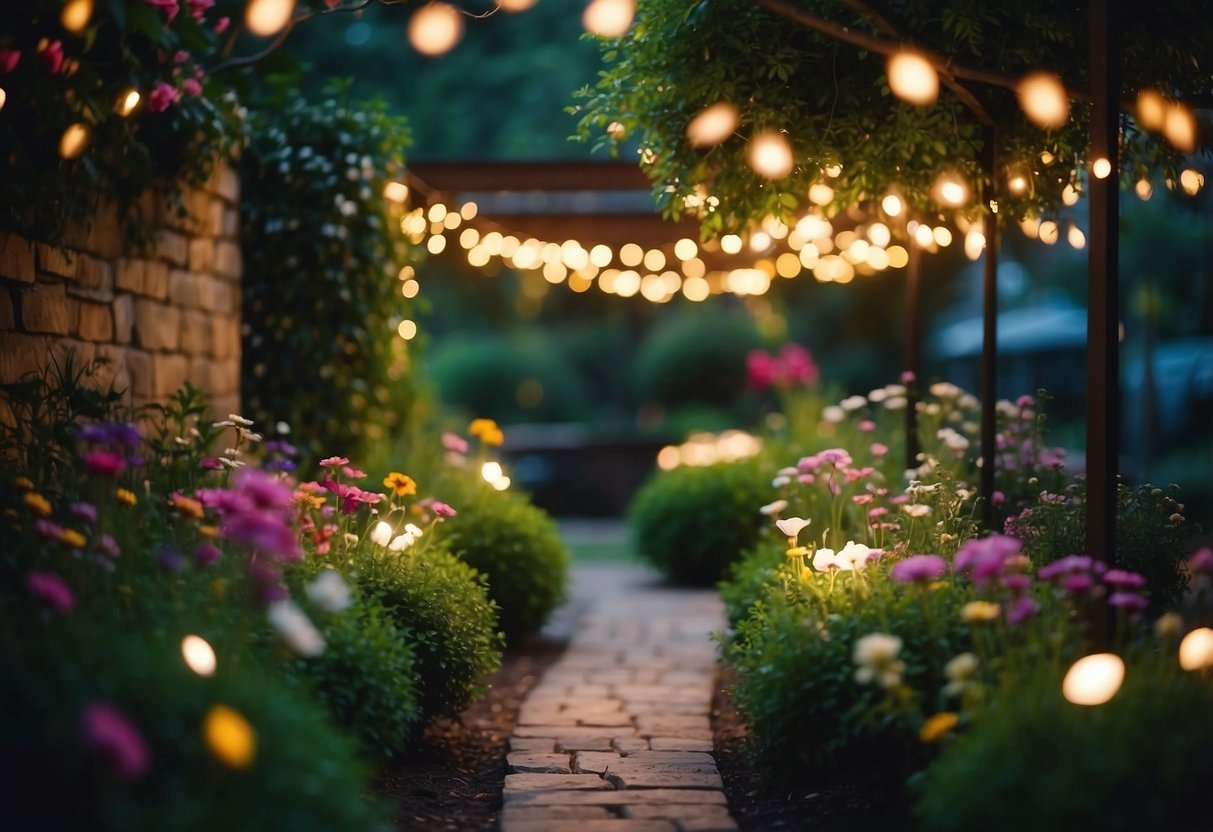
Creating a fairy light canopy can transform your garden into a magical haven. String fairy lights across tree branches or trellises to create a glowing ceiling.
Use solar-powered lights for an eco-friendly option. They charge during the day and shine brightly at night.
Drape lights over a seating area to make it cozy and inviting. For added charm, mix in some lanterns or mason jars filled with lights.
A fairy light canopy is perfect for evening gatherings, providing both light and a whimsical atmosphere.
10) Climbing Rose Arbor
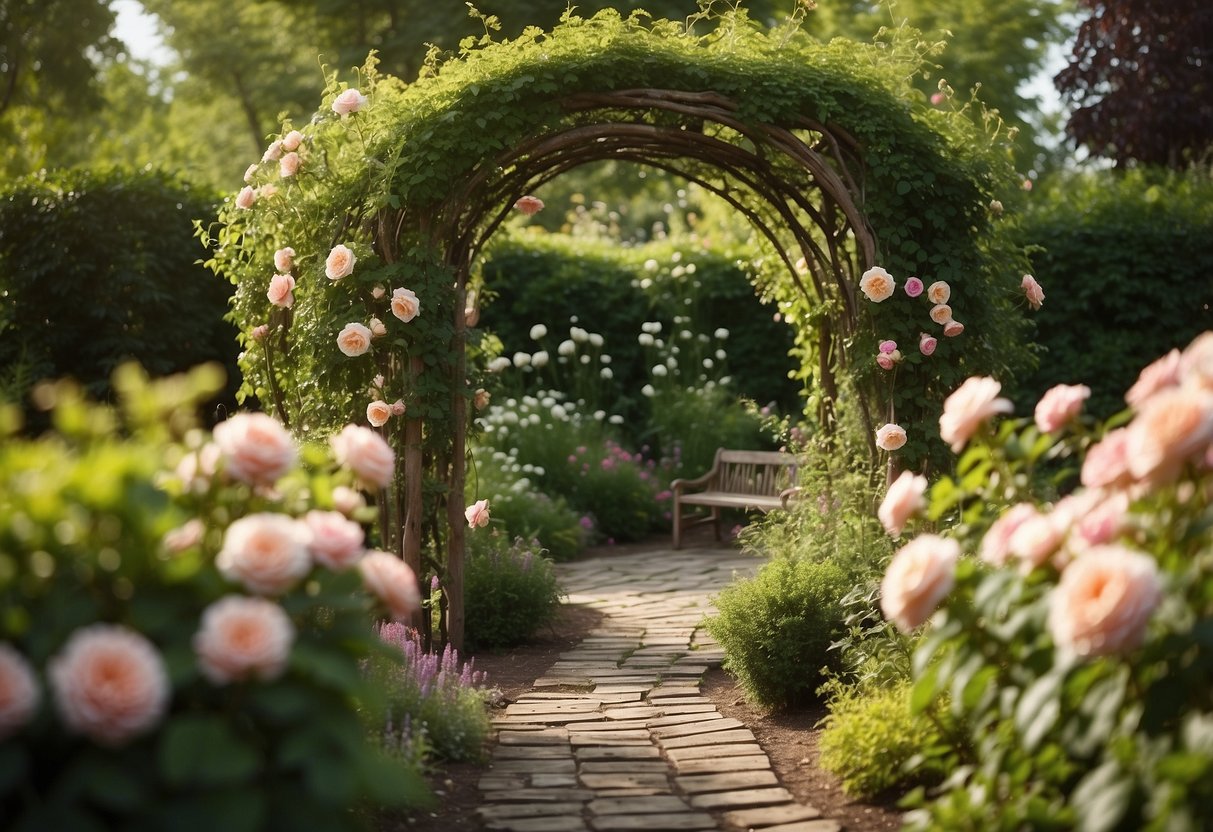
A climbing rose arbor adds a touch of romance to your garden. The roses can provide shade and a stunning visual appeal. You can create a serene seating area underneath it.
Choose varieties like the Kiss Me Kate. Place the arbor over a pathway or entrance to give it a charming look. Add some lush greenery around to complete the picture.
You can use dome structures or tunnel arbors for more shade. They are great for hot summer days. This will help keep your garden looking refreshing and inviting.
Planning Your Nature Garden

Creating a nature garden involves assessing your environment, selecting native plants, and using sustainable landscaping practices. These steps help create a garden that is beautiful, eco-friendly, and supportive of local wildlife.
Assessing the Environment
First, take a close look at your garden space. Identify sunny and shady areas, note soil types, and check for water sources. Understanding these factors helps you choose the right plants.
Observe the local wildlife. This guides you in adding features like bird feeders, bee houses, or bat boxes. Also, consider the climate and weather patterns in your region. This will affect plant selection and garden maintenance.
Make a sketch of your garden. Mark important features and zones. It doesn’t have to be perfect but should give you a good overview of where to place plants and structures.
Choosing Native Plants
Native plants are key to a thriving nature garden. They are adapted to the local climate and need less water and maintenance. Native species also support local wildlife like birds, bees, and butterflies.
Research which native plants thrive in your area. Local nurseries and garden centers often have helpful information and a good selection of native plants.
Choose a variety of plants to create a rich and diverse habitat. This can include a mix of wildflowers, shrubs, and trees. Avoid invasive species that might crowd out native plants.
Sustainable Landscaping Practices
Incorporate sustainable practices to maintain a healthy garden. Use organic compost and mulch to enrich the soil and retain moisture. Manual weeding and natural pest control methods reduce the need for harmful chemicals.
Consider drip irrigation or rain barrels to conserve water. These methods are eco-friendly and can save you money on your water bill.
Use recycled materials for garden features like paths and borders. Old bricks, stones, or reclaimed wood can add a rustic charm while being environmentally friendly.
By focusing on these aspects, you’ll create a nature garden that’s not only beautiful and unique but also supports the local ecosystem responsibly.
Creating Wildlife Habitats

Creating wildlife habitats in your garden can help support local ecosystems. Key elements include planting for pollinators, ensuring water availability, and providing shelter and nesting spots.
Designing for Pollinators
Plant native and nectar-rich flowers to attract pollinators like butterflies and bees. Bees are particularly drawn to blue, purple, and yellow blooms. Some good options include lavender, coneflower, and sunflowers.
Consider planting in clusters to make it easier for pollinators to find food. Avoid using pesticides, as they can harm these beneficial insects.
Mixing perennial and annual plants ensures continuous blooming, which provides a steady food source throughout the growing season. Flowering trees and shrubs like dogwood or lilac also serve as important nectar sources.
Providing Water Sources
Water is essential for wildlife. Install birdbaths, small ponds, or even simple water bowls to cater to different species. Birdbaths should be shallow with sloping sides, no deeper than 2 inches, to accommodate small birds.
Keep the water source clean to prevent the spread of disease. Adding stones or branches gives birds a place to perch.
For insects like butterflies, place small, shallow dishes filled with water and stones or marbles on the bottom. They can land safely and drink without drowning.
Shelter and Nesting Areas
Wildlife needs places to hide, rest, and raise young. Birdhouses and bee hotels are simple solutions. Place birdhouses in shaded areas with some cover to protect from predators.
Leaf piles, brush piles, and log stacks create natural shelters for insects, small mammals, and amphibians. These can be tucked away in a corner to keep your garden tidy.
Plant dense shrubs and trees to offer more hiding spots and nesting areas. Evergreen trees are especially good as they provide year-round cover. Install fencing or rock walls to create additional safety zones.
Ensuring your garden has diverse shelter options will make it a welcoming habitat for various wildlife species.







